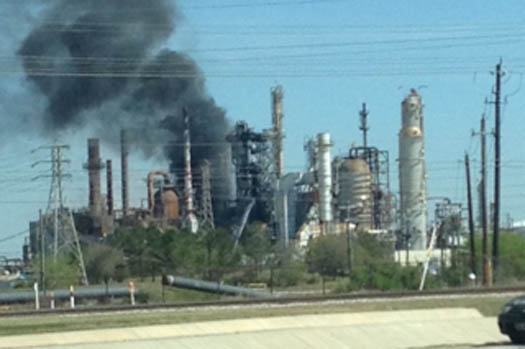Repost from the Sacramento Bee
Benicia should block oil trains
By Tom Steyer and Steve Young, Special to The Bee, March 14, 2016 9:30AM
HIGHLIGHTS
• Valero wants to bring trains carrying crude through Sacramento region to Benicia refinery
• Even without a catastrophe, oil trains pose a serious threat to public health and safety
• With clean energy and efficiency, California doesn’t need to take the risk
If approved, proposed new oil train terminals at refineries in California would turn our railways into crude oil superhighways. Mile-long oil trains would haul millions of gallons of toxic, explosive crude through downtown Sacramento and dozens of other California cities and towns. An estimated 5 million Californians live in the one-mile evacuation zone along oil train routes.
In Benicia, city officials are close to a final decision on the proposed Valero oil train terminal. It’s essential that City Council members, who hold a hearing on Tuesday, understand why oil trains are too dangerous for our communities. There is no sure way to protect public health while transporting crude oil by rail.
Valero wants to bring two 50-car trains carrying about 3 million gallons of oil to its Benicia refinery every day. The environmental review of the proposal cites the “potentially significant” hazard of a spill and fire.
In 2013, the oil train explosion in Lac Megantic, Quebec, demonstrated the danger. It killed 47 people, destroyed dozens of buildings and poisoned a local lake. Three years later, residents still live with fear and anxiety, and scientists have recorded an “unprecedented” spike of fish deformities.

But it doesn’t take a catastrophe for oil trains to pose a serious threat to public health and safety. They disrupt traffic, delay emergency response and bring more poisoned air and increased disease. That’s why six counties and 22 cities around Sacramento have already said no to these trains. But the safety of all Californians living in the blast zone lies in the hands of Benicia city officials who will decide whether to approve Valero’s permit.
On Feb. 11, after days of testimony from experts and community members, the city Planning Commission voted unanimously to deny the permit. Valero has appealed to the Benicia City Council, which will make the final decision.
Something similar is happening in San Luis Obispo County, where the county staff and the California Coastal Commission recommended that the county reject the Phillips 66 oil train terminal proposal. The county Planning Commission must decide soon, but the final decision will rest with county supervisors.
Last year, NextGen Climate, the Natural Resources Defense Council, ForestEthics and Communities for a Better Environment released a report on oil industry plans to ship dirty Canadian tar sands crude to West Coast refineries. The report found that heavy crude would increase carbon pollution by as much as 26 million metric tons – the equivalent of adding 5.5 million cars to the road.
The good news is that we don’t have to live with these oil risks barreling through town. We can make our communities safer by transitioning to clean energy. A recent report by the Union of Concerned Scientists revealed that improvements in fuel efficiency and energy technology could help us cut oil consumption in half by 2030.
There’s no place for extreme tar sands or Bakken crude in California’s emerging clean energy economy – and there’s no place in our communities for dangerous, unnecessary crude oil trains.
Tom Steyer is founder of NextGen Climate and can be contacted at info@nextgenclimate.org. Steve Young is a Benicia planning commissioner and can be contacted at steveyoung94510@gmail.com.



You must be logged in to post a comment.